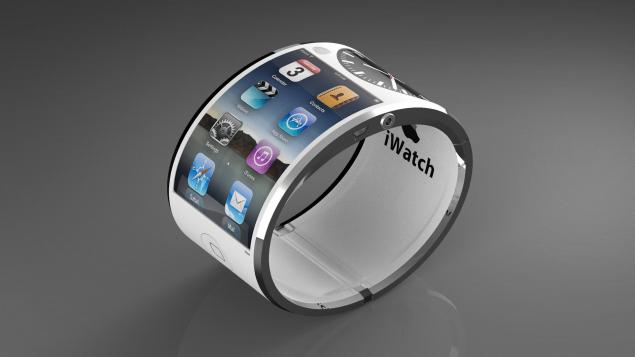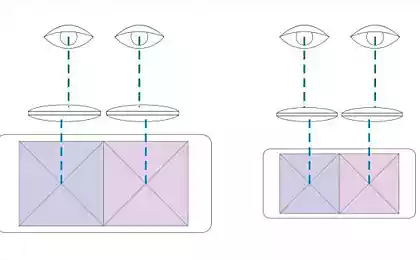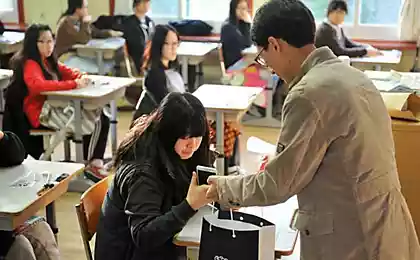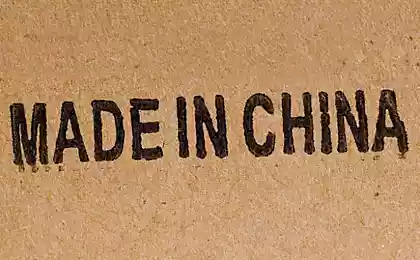535
How to recharge your mobile device in the future
There is a perception that the smartphone is a busy man for a year eats more electricity than a refrigerator. But this does not mean that once the battery level drops to low, the smartphone should be put on the wall in place of a refrigerator.
Wireless power is already on the way, soon it will come to us. Energy surrounds us everywhere, but most of it flows away unused.
Scientists and engineers have been able to come as close as possible to find a way to collect energy from the environment and even of ourselves. For example, by converting excess heat into electricity or from the case that can absorb energy of vibration during a walk or drive.
Now we are not talking about wireless charging, and the possibility to collect energy from the world around us. Instead of take acres of solar panels or to install a hundred-meter wind turbines, engineers are trying to find energy in a temperature difference, vibration of the environment or the human walk. It is a challenging task for the engineers and developers of mobile devices, because such innovations should not interfere in our daily lives.
Yes, there are such devices, but the most serious discoveries are made in laboratories now. Today we will discuss some promising ways to ensure the supply of mobile devices over which today employs scientists from around the world.
Thermoelectricity
Clothes made of thermoelectric materials will produce energy during the day. The electrons will run from warm to cool, creating a current. Moving from one metal conductor to another, the current will generate a charge. Plug the transition cable, and you will have electricity.
The human body is a constant source of heat. Back in 2010, mobile operator Orange revealed Power Wellies (rubber boots) — the most common mud boots with a thermoelectric insert in the sole for charging mobile phones. But Vodafone in 2013 showed the sleeping bags and shorts with thermoelectric pockets. Orange say that every 12 hours of walking in these boots give 1 hour of battery life. Pockets Vodafon'give a half hour talk on a cell phone for every 8 hours spent in a sleeping bag.
Now the difficulties that must be overcome. The collection of heat and its transformation into electricity using termoelectrica — it quite easy, but the process itself remains inefficient. To collect still more than 20 percent of the heat. However, this is not the biggest problem. The fact that the amount of charge received by termoelectrica, the more the temperature difference. Therefore, if the ambient air temperature close to the temperature of the human body, the flow of energy produced to turn into a trickle.
Now, about the potential of this technology. Given the low energy limit, which is given for once, the thermoelectricity is hardly the best source of energy. It may be suitable for use in embedded medical sensors, and fitness trainers can afford to work indefinitely. One of the promising thermoelectric material called Power Felt is a fabric created from Wake Forest University in North Carolina. This fabric is made from a weave of carbon nanotubes and plastic fibers, it is suitable for sewing a full garment. And if scientists can get rid of superfluous wires, the thermoelectric clothes covering most of body, will be able to collect enough heat to this technology could be in demand.
Piezoelectricity
If you squeeze, shake or something else to influence some of the materials in the first place as a quartz, they create an electrical charge. The impact should cause the material of the oscillations only at a certain frequency.
Currently, this technology has found its use in devices with low energy consumption. For example, remote control from Arveni and Phillips. Engineers are already optimistic about the use of piezoelectric devices in the mobile industry. But the current available materials are still not able to collect enough energy to power a mobile device. There is even a patent for piezoelectric keyboard, which was registered in 1989. But until then, until you find a way to increase the amount of energy we will not see laptops, which is charged from the taps on the keys.
The main problem of this technology is that the piezoelectric materials do not hold the exact frequency that should be configured. Some ceramic materials able to work with the vibrations of wider bandwidth, but they are very fragile and therefore not suitable for mobile devices, especially for flexible.
But there is one way, which is the changes in the structure of the material that could make it flexible. Dr. Xudong Wang from the University of Wisconsin has created spongiform piezoelectric, the amount of which can be tailored to any device. The mobile device is wrapped by this material can be charged directly into the car dashboard. "The weight of the battery presses on the mobile phone, causing it to vibrate," he explains, "so we solve the problem with the work at the resonant frequency".
Biomechanical energy
Biomechanical devices use movement of the human body to set in motion a miniature generators. For example, you can use the power of our knees when they bend and straighten during walking.
Until the sale of no biomechanical device. At the same time, the military already use knee braces PowerWalk company Bionic Power. The developer claims hour one hour walk wearing on both legs with braces allow fully charge four mobile phones. Don't even need to strain your imagination to imagine what will be popular to use this device in people who love camping and outdoor activities.
Bicycle Dynamo technically, for example, are not considered biomechanically, but they have been around for decades and are used to power Bicycle headlamp. And recently, several companies have shown a special USB adapters for bikes, allowing you to charge mobile devices while driving.
Biomechanical energy collectors are really able to generate a large amount of energy, but they look very rough. Of course, knee braces, over time, will become less and less, but yet don't forget to dress in the morning. The inconvenience factor may limit the scope of application of such devices, for example, travel, riding, sports or the military.
Solar energy
Mobile solar starter kit the Chargers: Bar attaches to your bag and the battery easily fits in the hand.
Solar powered energy works, as there are materials that produce an electric current when the light falls on them.
Today there are dozens of ways to charge a mobile phone using solar energy. But all these methods require a lot of time, it appears that it is much easier to find the socket than to charge your gadget from sunlight. The only real option panel from the German firm Chargers. This device is expensive, but uses its own external battery, which holds so much energy that is enough to charge two mobile phones. Moreover, the device can easily attach to a bag or backpack.

But there is a limit of the so-called Shockley-Queisser — rule of physics, which States that the cell battery can not collect more than 29 percent of the solar energy that falls on it. The size of solar panels for personal use is not allows you to collect the right amount of power even in the most favorable conditions. The concept of "mobile energy" means that the person is in motion, instead of waiting for it to charge the device.
Already there are rumors that Apple is going to make the iWatch solar power.

This year, Apple may provide us a new sensation, proving once again that she is the most innovative company in the world.
Source: zeleneet.com
Daily consumption of fruit reduces the risk of developing cancer
Spanish Students Create Plant Solar Panels























